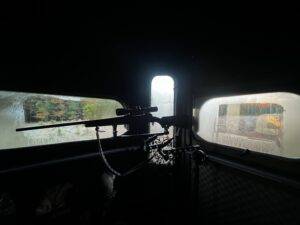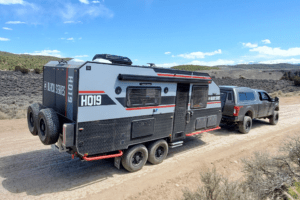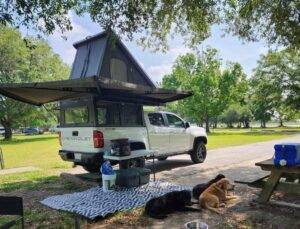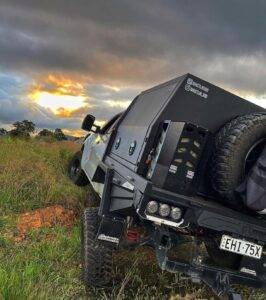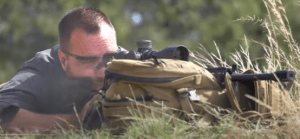Row Crop Field Buffers Show Dramatic Increase In Bobwhite Potential in Most Regions
A conservation practice introduced in agricultural row crop settings in 2004 by USDA at the behest of the National Bobwhite Conservation Initiative (NBCI) has resulted in bobwhite populations up to three times greater than those found in traditionally managed crop fields, according to a just-released study of the program’s impacts.
Led by Mississippi State University, Forest and Wildlife Research Center, the study concluded that Habitat Buffers for Upland Birds, referred to as Conservation Practice 33 (CP33), added an average of 1.52 bobwhites to the fall population population for every acre of native grassland (grasses, forbs and legumes) in buffers. At the current enrollment of 238,046 acres, the study estimates the practice has added about 30,000 coveys to the landscape, each year. If program participation rose to the current cap of 500,000 acres there would be an estimated 63,000 coveys added. At an average of 12 quail per covey, that’s about three-quarters of a million more quail in the fall.
“This study clearly demonstrates what NBCI has said all along: that is, that substantial, measurable wildlife benefits can be achieved through strategically implemented conservation practices on working agricultural lands where much of the potential quail habitat exists,” said NBCI Director Don McKenzie. “Furthermore, it shows how a relatively small change in primary land use – 5 percent — at little or no cost to landowners can have a disproportionately positive impact on bobwhite populations in some regions. CP33 is a win for everyone. It allows the retirement of less productive field margins, often with net financial gains through the incentives, while providing environmental benefits like clean water and habitat for pollinators, quail and other grassland birds. NBCI urges a more comprehensive application of this efficient practice as a commonsense approach for government, for farms and for wildlife.”
The USDA Farm Service Agency (FSA) implemented the Habitat for Upland Birds practice as part of their Continuous Conservation Reserve Program (CCRP) in 2004, initially allocating 250,000 acres in 35 states for 10 years of active management. Essentially, CP33 offers landowners incentives for establishing 30 to 120-foot-wide buffers of diverse native grasses and forbs along the edges of crop fields to provide habitat for bobwhites and other grassland birds. FSA also charged what is now the National Bobwhite Technical Committee with devising a monitoring protocol to measure the response of bobwhites and targeted songbird species. CP33 was the first USDA conservation reserve practice designed specifically to help meet recovery objectives of a large-scale conservation initiative, as well as the first and only USDA practice for which USDA requires monitoring to actually measure conservation impacts.
State fish and wildlife agencies, private conservation organizations and universities in 14 states collaborated with Dr. Wes Burger at Mississippi State University to monitor differences in bobwhite and upland songbird densities and buffer vegetation characteristics on nearly 600 buffered fields and an equal number of “non-buffered” fields from 2006-2011..
Among the report findings:
- Researchers observed 50-110% greater fall bobwhite covey densities on CP33 fields across all states
- CP 33 works especially well in some regions, most notably in the Southeastern Coastal Plain (Bird Conservation Region 27) where covey densities were three times greater, and in the Central Hardwoods (Bird Conservation Region 24) and the Mississippi Alluvial Valley (Bird Conservation Region 26), where covey densities were two times greater
- Priority songbirds that share habitat with bobwhites, such as dickcissels and field sparrows, also benefitted from CP33 buffers
- Required management activities designed to maintain habitat quality for bobwhites were implemented on less than half of the enrolled acres, presenting an opportunity for program improvement
- Kansas and Oklahoma state wildlife departments conducted separate, but related, evaluations of CP33 for bobwhites and ring-necked pheasants, and found both species were more abundant with grass buffered crop fields compared to field lacking buffers
- To have maximum impact, the buffered fields need to be strategically concentrated in relation to one another rather than stranded in isolated pockets across the landscape
Project Manager Dr. Kristine Evans identified another important outcome of thie study. “CP33 monitoring exemplifies that large-scale coordinated monitoring across multiple agencies/organizations is entirely possible and can be very successful in measuring programmatic outcomes given appropriate funding mechanisms and monitoring infrastructure.”
For more details about the technical aspects of the monitoring and the results, the full final report is available at http://bringbackbobwhites.org/
The national CP33 monitoring program was funded by the Multistate Conservation Grant Program (MSCG; Grants MS M-1-T and MS-M-2-R), a program supported with funds from the Wildlife and Sport Fish Restoration Program and jointly managed by the Association of Fish and Wildlife Agencies and the U.S. Fish and Wildlife Service. Additional support was provided by Mississippi State University Forest and Wildlife Research Center, USDA-Farm Service Agency, and USDA-Natural Resources Conservation Service- Conservation Effects Assessment Project.
Headquartered at the University of Tennessee, NBCI is a project of the National Bobwhite Technical Committee (NBTC) to elevate bobwhite quail recovery from an individual state-by-state proposition to a range-wide, policy-level leadership endeavor. The committee is comprised of representatives of state fish and wildlife agencies, academic research institutions and non-governmental conservation organizations. NBCI is funded by the National Fish & Wildlife Foundation, two dozen state wildlife management agencies, the Association of Fish and Wildlife Agencies and Southern Company. For more information, please visit www.bringbackbobwhites.org

